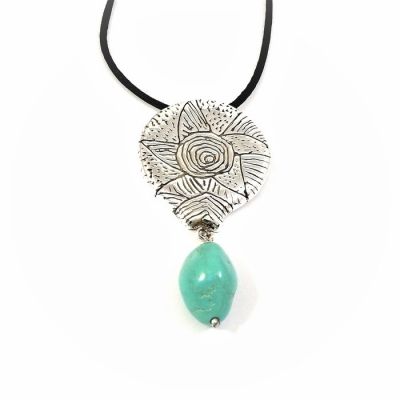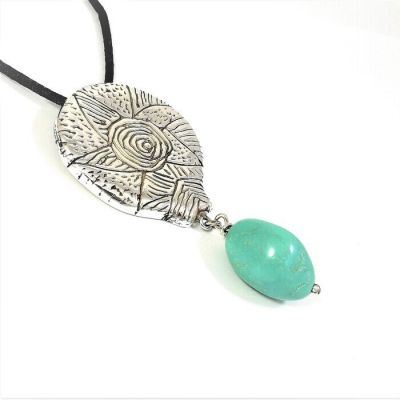The "Cycladic Star" pendant was inspired by the shape of a frying-pan, the ancient clay vessels, which were mostly discovered in Syros. The Obsidian black stone was also found in the Cylades islands in the Aegean sea and the combination of these two elements gave us this unique jewel.The frying-pan vessels were created in the Cyclades since the Early Cycladic period and later on where these pots traveled in Asia Minor and the rest of Greece, through the trade of the islanders of the Aegean. This exclusive handmade work of art is made of pure silver 999° attached on a tirquoise stone and is offered with a black saten cord.
Dimensions: 4 cm x 8 cm x 8 mm
You can also see the "Cycladic Star" without the stone and make your selection!
All prices include VAT.
Among the clay vessels of the cycladic art, the frying-pan vessels stand out, which owe their name to the fact that they resemble a frying pan. They date back from the Early Cycladic II period (2800-2300 BC) and the purpose of these vessels with a forked handle is uncertain.
On their undecorated side there is an upright rim. The other side is covered with incised and impressed motifs. A pubic triangle appears near the handle. The motifs decorating them are inspired by the world of the sea, such as spirals, which recall waves, the sun, stars, and the starfish.
It is not known exactly how the frying-pan vessels were used. It has been suggested that they functioned as mirrors, if they were filled with water, or drums, if they were originally covered with skin, and even as primitive navigation instrumentsor as moulds for making salt cakes, or even that their decoration was of some symbolic religious significance related to the sun, the sea and female fertility.
Since they were primarily grave gifts, a ceremonial or religious use cannot be ruled out. It may be that they were destined to hold objects used for the beautification of the dead or that they were used as containers for offering fruits to the dead or as drums in funerary ceremonies.
The motifs possibly had a religious character, but it remains a fact that frying-pan vessels are sometimes found in settlements as well as graves, and that they are sometimes undecorated. It is, therefore, clear that they were used in everyday life too.
Frying-pan vessels are exhibited at the National Archaeological Museum, the Museum of Cycladic Art - N&P Goulandris Foundation, in Athens.
No posts found









